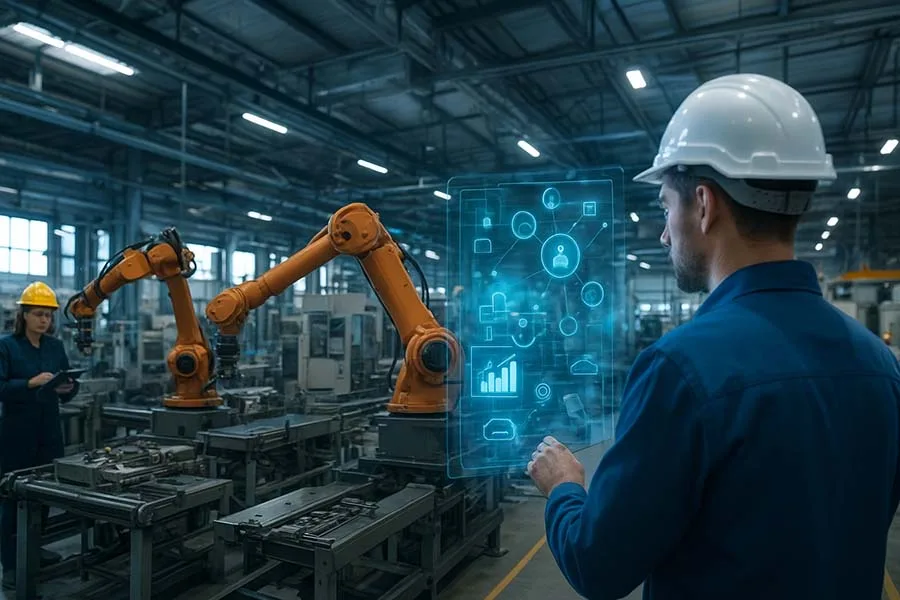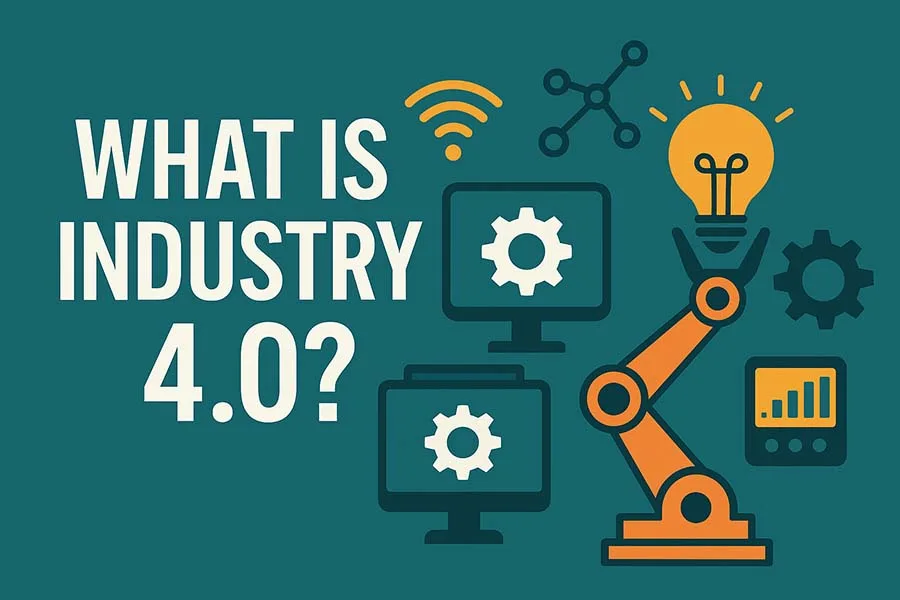Introduction: The Smart Factory Revolution
Imagine a factory where machines talk to each other, sensors monitor equipment in real-time, and data guides every decision. This is IIoT in action—the backbone of modern Industry 4.0. From predictive maintenance to energy efficiency, IIoT transforms traditional manufacturing into smart, connected operations.
In this guide, we’ll explore what IIoT is, why it matters, the technologies powering it, real-world applications, challenges, and its future potential. By the end, you’ll understand how IIoT connects machines, data, and people—and why your business can’t afford to ignore it.
What is IIoT? Understanding the Industrial Internet of Things
The Industrial Internet of Things (IIoT) is an ecosystem of connected industrial devices, machines, and sensors that collect, analyze, and act on data. Unlike consumer IoT (think smart homes), IIoT focuses on industry-critical operations such as manufacturing, energy, logistics, and smart cities.
Key points:
- Connected devices: Sensors, machines, robots, and control systems.
- Data-driven decisions: Real-time analytics improves efficiency and reduces downtime.
- Integration with humans: Alerts and dashboards allow operators to respond proactively.
Lesser-Known Fact: Some IIoT systems can predict machine failures weeks in advance using just vibration and temperature data—avoiding costly downtime before it happens.
Why IIoT Matters: Efficiency, Safety, and Competitive Advantage
IIoT isn’t just a tech trend—it’s a strategic advantage for modern manufacturers. Benefits include:
- Increased Operational Efficiency: Automated monitoring and real-time alerts reduce production delays.
- Predictive Maintenance: Machines self-report issues, preventing costly breakdowns.
- Energy Optimization: Sensors track energy usage and suggest savings.
- Enhanced Safety: Wearables and smart sensors reduce workplace accidents.
- Data-Driven Strategy: Businesses can analyze performance trends and make informed decisions.
Fun Fact: Some factories have reduced maintenance costs by up to 30% just by adopting IIoT predictive maintenance.
Core Technologies Behind IIoT
IIoT relies on multiple technologies working together seamlessly:
1. Sensors and Devices
- Measure temperature, vibration, pressure, humidity, and more.
- Examples: smart motors, robotic arms, conveyor sensors.
2. Connectivity Solutions
- 5G, Ethernet, LPWAN, Wi-Fi: Enable fast, reliable data transmission.
- Choose connectivity based on range, speed, and data volume requirements.
3. Cloud Platforms
- Centralized data storage and analytics.
- Examples: AWS IoT, Microsoft Azure IoT, Siemens MindSphere.
4. Edge Computing
- Data processing closer to the source reduces latency and network load.
- Ideal for real-time decision-making in critical operations.
5. Digital Twins
- Virtual replicas of physical assets for simulation and analysis.
- Allows testing changes without disrupting actual production.
- [Link to supporting article on Digital Twins in Industry 4.0]
Data Collection, Analytics, and Decision Making
IIoT is powered by data. Collecting data is only half the story—the key is turning it into actionable insights:
- Real-Time Analytics: Dashboards show machine status instantly.
- Predictive Analytics: Forecast maintenance and production bottlenecks.
- Prescriptive Analytics: Suggests the best course of action automatically.
Internal Linking Placeholder:
- Link to article: “Cybersecurity in CNC and IIoT Environments”
- Link to article: “Overcoming Skills Gap in IIoT Operations”
Real-World Applications of IIoT
IIoT is transforming industries across the globe. Examples include:
- Smart Factories: Automated production lines, predictive maintenance, and resource optimization.
- Supply Chain Monitoring: Track shipments, inventory, and logistics in real-time.
- Energy Management: Reduce waste and optimize renewable energy integration.
- Remote Equipment Monitoring: Manage off-site machinery efficiently.
- Healthcare & Pharmaceuticals: Automated production, quality monitoring, and safety compliance.
Fun Fact: Some breweries use IIoT to monitor fermentation in real-time, ensuring perfect beer quality every batch.
Challenges and Considerations
Despite its advantages, IIoT comes with challenges:
- Cybersecurity Risks: Connected machines are vulnerable to hacking.
- Integration Complexity: Connecting legacy equipment with modern systems can be tough.
- High Initial Costs: Investment in sensors, connectivity, and software is significant.
- Skills Gap: Staff may need training to interpret data and manage systems.
Internal Linking Placeholder:
- Link to article: “Cybersecurity in CNC Environments”
- Link to article: “Training and Skills for Modern IIoT Operations”
The Future of IIoT
IIoT continues to evolve:
- AI Integration: Autonomous decision-making for machines.
- Industry 5.0 Synergy: Humans and machines collaborating more seamlessly.
- Sustainability: Smarter energy usage and waste reduction.
- Global Connectivity: 5G and satellite networks will enable IIoT in remote locations.
Industrial Internet of Things (IIoT) FAQ
Further Read
- Core Foundations of Industry 4.0: The Tech Stack Explained
- Industrial Internet of Things (IIoT): Connecting Machines, Data, and People
- Digital Twin Technology: From Concept to Real-World Applications
- Robotics and Automation: The Heart of Smart Manufacturing
- Artificial Intelligence (AI) and Machine Learning: Smarter Manufacturing
- Augmented Reality (AR) and Virtual Reality (VR): The Human-Tech Interface
- Data Analytics and Cloud Computing in Industry 4.0
- Cybersecurity in Industry 4.0: Protecting the Smart Factory
- Integration and Interoperability in Industry 4.0
- Benefits of Understanding the Core Foundations: People, Processes, and Technology
- Challenges and Barriers in Industry 4.0: Overcoming the Roadblocks to Smart Manufacturing
- The Future of Manufacturing: Towards Industry 5.0
Conclusion: IIoT as the Heart of Industry 4.0
The Industrial Internet of Things is more than just technology—it’s a strategic enabler for smart, connected manufacturing. By linking machines, data, and people, IIoT helps companies reduce costs, increase efficiency, and stay competitive.
Explore our related articles to dive deeper into the IIoT ecosystem:
- Digital Twins in Industry 4.0
- Cybersecurity in CNC and IIoT Environments
- Overcoming Skills Gap in IIoT Operations
Call to Action: Have you started implementing IIoT in your operations? Share your experience or questions in the comments below!





